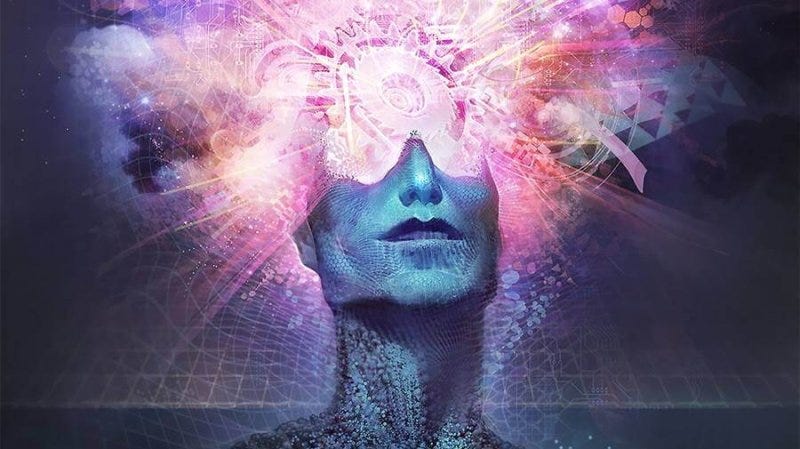Writing practice: Use synaesthesia to activate imagination
New series! Practical tips for imaginal writing
Hi all,
In the past five years, my writing practice has changed beyond recognition.
I am a woman who once wrote a novel in a literal cupboard. It was a five-year-long exercise in miserable, disembodied intellectualization.
These days, my writing practice is joyful, fun, expansive, physically pleasurable. Those dark hours before sunrise, when I’m out prowling the lanes and hills and the world seems to ask to be spoken in words: they’re the best part of my day and my life.
Everyone deserves to experience this. Imagination and creativity are a universal birthright, and unused creativity is a poison that is creating much of the world’s suffering.
So I plan to start sharing some of the practices that have helped me step into this new, life-giving relationship with writing. They’re practices I’ve found intuitively, and which I often teach in my work as a book coach. Because I’m a writer who coaches writers, these practices are primed for writing, but with a little tweaking most of them could apply to any creative practice.
Starting this month, I’ll offer one such practice a month. Please feel free to share with any writers or artists in your life who might benefit, and encourage them to sign up to receive future tips.
Here goes.
Love,
xx Ellie
Writing warm-up: Activate synaesthesia
When?
At the start of any creative session, or when you simply want to find a new perspective on something or inhabit the world around you more deeply.
Why?
All creative work must start with experiencing things afresh; with seeing and feeling beyond the everyday appearances of things. At the very least, this helps you make new connections and avoid well-worn associations and clichés.
But it might just do a lot more than that, too. The real gold in this practice is when it acts as a gateway; when synaesthetic experience allows you to apprehend and enter the rich field beyond the material, where all stories and ideas are originally sourced.
“But I can’t do that”
I wouldn’t be so sure.
Here is one of a few hills I will die on: synaesthesia is not a rarefied trait but a universal capacity and a critical gateway to imagination. (More on that in another essay soon.)
If a frosty morning has ever tasted bitter to you, or you’ve associated certain numbers or days of the week with colours, or you’ve felt a song physically hold you—you’ve experienced synaesthesia.
And this is a capacity that can be honed and cultivated.
I know, because I’ve done it.
OK, how?
The steps in this exercise are extremely simple. I’d suggest you read them through and internalize them, so that you can complete this practice without consulting any notes.
This exercise could take as little as ten minutes, or you could stretch it out and remain in the meditative space for a few hours.
Start by setting the tone. You are not grasping for anything. You’re not trying to achieve anything. You’re just letting whatever happens unfold. You are relaxing into something that is already there in your body, and has been all along. Ask yourself how easeful this could be. How gently curious you can be about whatever arises.
Relax. Close your eyes. Drop in. Take some deep breaths. Sit and breathe deeply until you arrive fully in your body.
When you’re fully relaxed and present, bring the colour red into your body. Feel the colour red in your bones and your blood. Taste red. Smell red. Hear red. See red, not with your eyes but with your whole body and your internal vision.
When you’ve fully occupied red, it fades to orange. Same again: experience orange in all of your senses.
Pass through all the colours of the rainbow this way. Red, orange, yellow, green, blue, indigo, violet. Stay with each colour until you’re experiencing it in all of your senses.
When you reach the end of the rainbow, keep your eyes closed as you experience the world around and inside you. Taste the sound of those birds. Smell the breeze. Hear the stiffness in your shoulders. Get curious about the sense impressions, images, and glimmers of worlds and stories that might bubble up inside you. It could be the smallest sensation, but allow it to unfold. Imagination often speaks in a soft voice, especially at first.
My practice is to keep my eyes closed and use this meditative state to enter the story world I’m writing, and see what unfolds there. You could do that, or you could gently open your eyes and see how different the world around you feels, and what it wants to reveal to you for your art today.
When you’ve finished whatever you’re doing, make sure to close the ritual. Close your eyes, offer thanks for your experiences, and progress through the colours of the rainbow as before, but in reverse: violet, indigo, blue, green, yellow, orange, red. Then gently open your eyes and return to the material world.
There is no wrong way to do this. Any sensation that comes up in connection with the colours: welcome it. You don’t have to understand it. In fact, it’s better if you don’t. The whole point is to move beyond your cognition.
If you try this practice, please let me know how it goes! I’m always curious to see how it lands for others.



Thanks for this generous offer x